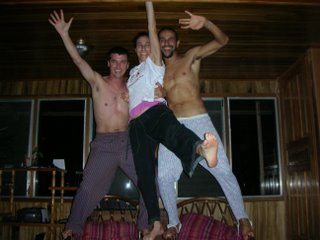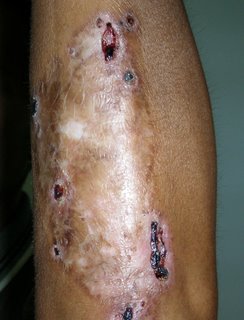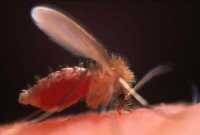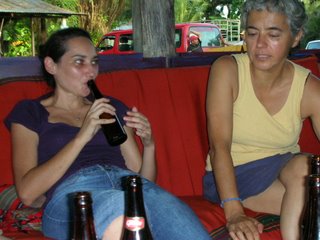
 The pictures on the left side of the page are taken during my day-to-day life in Guatemala. The pics on the right are taken during my "vacation" this week in NYC. No wonder I am feeling particularly confused! Sad suspicious faces, whizzing subways, liquors to dull the pain of our very existence....
The pictures on the left side of the page are taken during my day-to-day life in Guatemala. The pics on the right are taken during my "vacation" this week in NYC. No wonder I am feeling particularly confused! Sad suspicious faces, whizzing subways, liquors to dull the pain of our very existence....I also put "vacation" in quotes because part of
 the motive for coming to NYC was to pick up my prescription medication that I could not get in Guatemala. My beloved sister sent my refills via DHL, but the retards who work there got confused between my office address and the dead package office (they call it "customs"). We have been
the motive for coming to NYC was to pick up my prescription medication that I could not get in Guatemala. My beloved sister sent my refills via DHL, but the retards who work there got confused between my office address and the dead package office (they call it "customs"). We have been  waiting over 6 weeks for a package they promised to deliver in 3 days. To my delight, I've discovered that there are several websites exclusively dedicated to railing on DHL and it's shitty un-service.
waiting over 6 weeks for a package they promised to deliver in 3 days. To my delight, I've discovered that there are several websites exclusively dedicated to railing on DHL and it's shitty un-service.Anyway, I had to pay out of pocket to replace my lost medicine. Does $550.00 for a 2-month supply seem a tad overpriced to anybody else? It's not the like medicine really works that well anyway. At least the clinical trials don't show an overwhelming effect.
Let's just pretend for a second that I was one of the > 40 million Americans who does not have health insurance. Just for one medicine, I would have to pay over $3,300 dollars per year. But luckily I have health insurance, so usually I only have to pay a $20.00 copayment for each batch of pills. Who pays for the rest? All of you suckers! Your premiums are through the roof, aren't they?

You are not the only loser. We all get screwed, because the US is spending more than 16% of our GDP on health care, instead of investing the money in education, or the environment, or free frozen York Pepperment Patties for everybody. Wherever it is that nice governments like Canada invest their money. Pharmaceuticals account for the fasting growing piece of the health care cost pie. That money we spend is buying the fancy suits that fill the pharmaceutical reps' closets. The multimillionaire pharma CEOs are spending our money on god-knows what: another vacation in St. Bart's? more botox?
 alimony? How could they possibly spend it all during one lifetime?
alimony? How could they possibly spend it all during one lifetime?Why am I up on a soapbox today, and what exactly am I railing against? I have no idea. I think I am only bitter because I have a headache and because I feel sick and confused on my vacation and because I spent a fortune at Duane-Reade. I think the coffee might be stronger in Guatemala. On the bright side, I am delighted to see my sister and many friends, including pregnant Aoibheann. Pregnant Aoibheann looks even more beautiful than not-pregnant Aoibheann, which is saying a lot.







